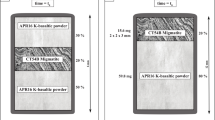Abstract.
The submarine Healy volcano (southern Kermadec arc), with a 2–2.5 km wide caldera, is pervasively mantled with highly vesicular silicic pumice within a water depth of 1,150–1,800 m. Pumices comprise type 1 white–light grey pumice with ≤30 mm vesicles and weak-moderate foliation, type 2 grey pumice with millimetre-scale laminae, flow banded foliation, including stretched vesicles ≤55 mm in length, and a minor finely vesicular type 3 pumice. All types are sparsely porphyritic, with undevitrified glassy groundmass (68–70% SiO2), which is microlite and lithic free. Coexisting pyroxenes yield magma temperatures of ~950 °C. Pumice density is ≤0.5 g cm–3 and vesicularity is 78–83%. Vesicle size distributions for types 1 and 2 pumice, range from ~20 µm to >20 mm, with a strong power-law relation (with d=–2.5±0.4) for vesicles <1–2 mm. Larger vesicles have variable size modes. The vesicle size distribution and packing indicates rapid magma decompression and ascent. Consideration of the pressure dependent, solubility of H2O at a magma temperature of ≤950 °C and water content of ≤6 wt%, with pumice petrography and vesicle granulometry, strongly suggests a pyroclastic eruption. Reconstructions of the submarine edifice between water depths of 1,000 and 550 m constrain the ambient hydrostatic pressure to ~6–9 MPa. Pressures >~9 MPa will limit vesicularity to less than the observed 78–83%, whereas pressure <~6 MPa require a more shallower reconstruction of the edifice and larger-volume syn-eruptive collapse. Uniformly high vesicularity is interpreted as evidence of insulation within an eruption column comprising steam and hot pyroclasts. Most pyroclasts cool, condensing and ingesting water into steam-inflated vesicles, and then sink. Progression into pyroclastic mode would expand the eruption column, displace ambient water, reduce the hydrostatic load, and further promote vesiculation and fragmentation. Pyroclasts within the column would quench at these reduced pressures. We argue that Healy eruptions deeper than ~1,000 m cannot be pyroclastic. Volumes for the lower and upper bounds of edifice size are 2.36 and 3.58 km3, respectively, but do not account for intra-caldera pumice fill. These volumes are considered to be predominantly primary eruption output, as shown by a dearth of accessory lithics in all pumice, yielding (at an average 81% vesicularity) eruptive pumice volumes of between 10 and 15 km3. Some pyroclasts may have risen to the sea surface and be a correlative of the sea-rafted Loisels pumice; the latter occurs in some New Zealand Holocene beach sequences and has a estimated age of 590±80 calendar years.
Similar content being viewed by others
Author information
Authors and Affiliations
Additional information
Electronic Publication
Rights and permissions
About this article
Cite this article
Wright, I.C., Gamble, J.A. & Shane, P.A. Submarine silicic volcanism of the Healy caldera, southern Kermadec arc (SW Pacific): I – volcanology and eruption mechanisms. Bull Volcanol 65, 15–29 (2003). https://doi.org/10.1007/s00445-002-0234-1
Received:
Accepted:
Published:
Issue Date:
DOI: https://doi.org/10.1007/s00445-002-0234-1




